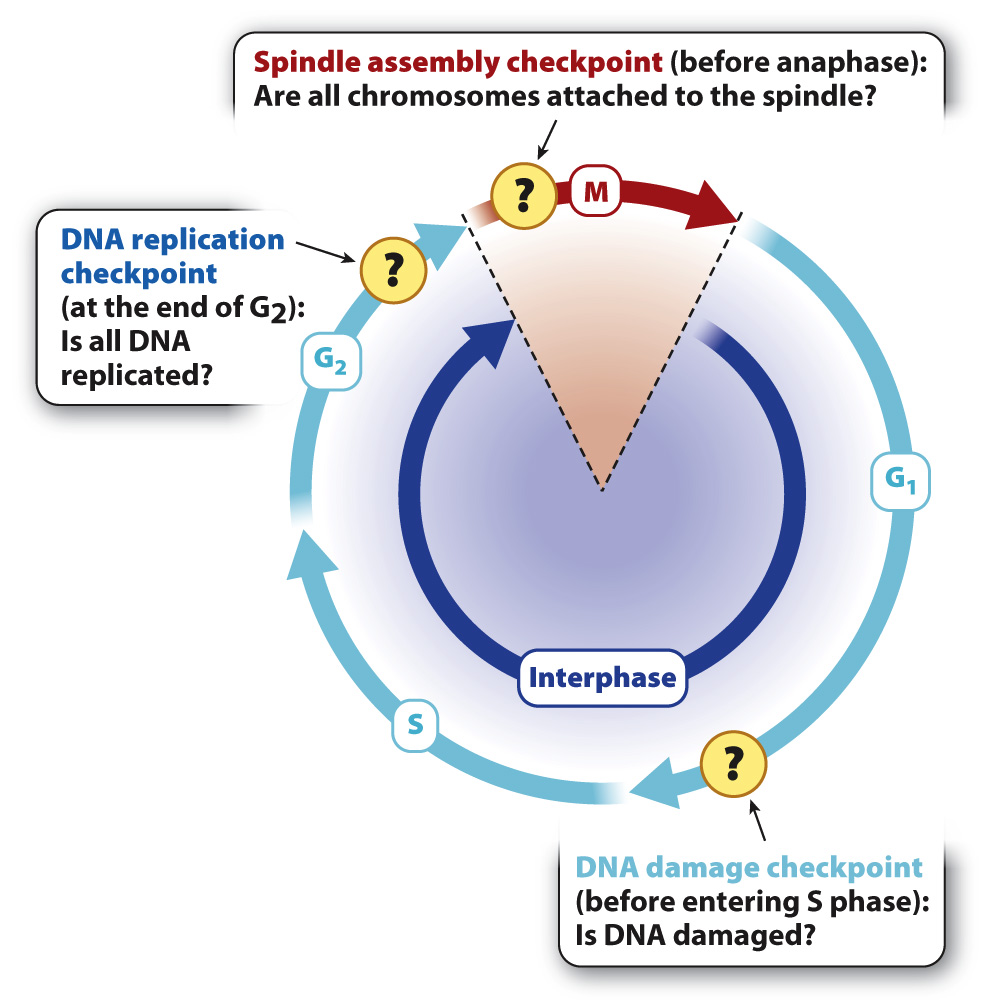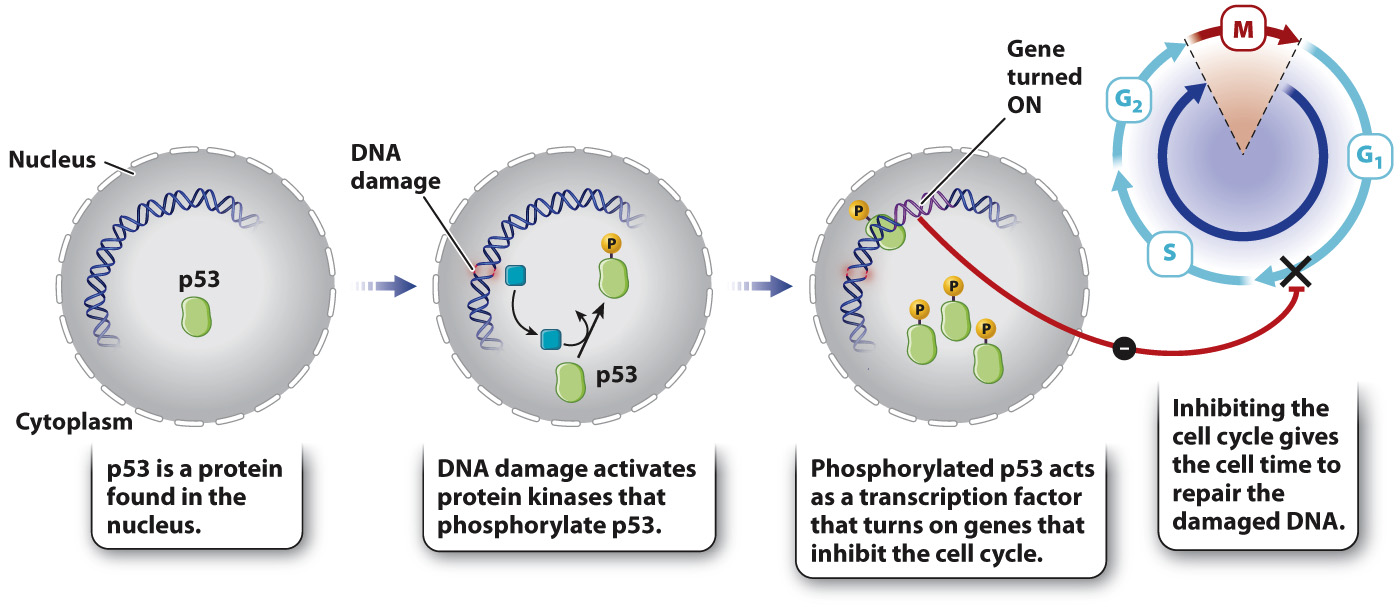Cell cycle progression requires successful passage through multiple checkpoints.
Cyclins and CDKs not only allow a cell to progress through the cell cycle, but also give the cell opportunities to halt the cell cycle should something go wrong. In other words, if the preparations for the next stage of the cell cycle are incomplete or if there is some kind of damage, there are mechanisms that block the cyclin–
Cells have many cell cycle checkpoints. Three major checkpoints that have been well studied are illustrated in Fig. 11.17. The presence of damaged DNA arrests the cell at the end of G1 before DNA synthesis; the presence of unreplicated DNA arrests the cell at the end of G2 before the cell enters mitosis; and abnormalities in chromosome attachment to the spindle arrest the cell in early mitosis. By way of illustration, we focus on the key checkpoint that occurs at the end of G1 in response to the presence of damaged DNA.

DNA can be damaged by environmental insults such as ultraviolet radiation or chemical agents. Typically, damage takes the form of double-
When DNA is damaged by radiation, a specific protein kinase is activated that phosphorylates a protein called p53. Phosphorylated p53 binds to DNA, where it turns on the expression of several genes. One of these genes codes for a protein that binds to and blocks the activity of the G1/S cyclin–

Quick Check 7 Can you think of two ways in which the function of p53 can be disrupted?
Quick Check 7 Answer
The function of the p53 protein can be disrupted by a mutation in the p53 gene. Alternatively, certain viral proteins, such as the E6 protein of HPV discussed in Case 2: Cancer, can interfere with the function of the p53 protein.